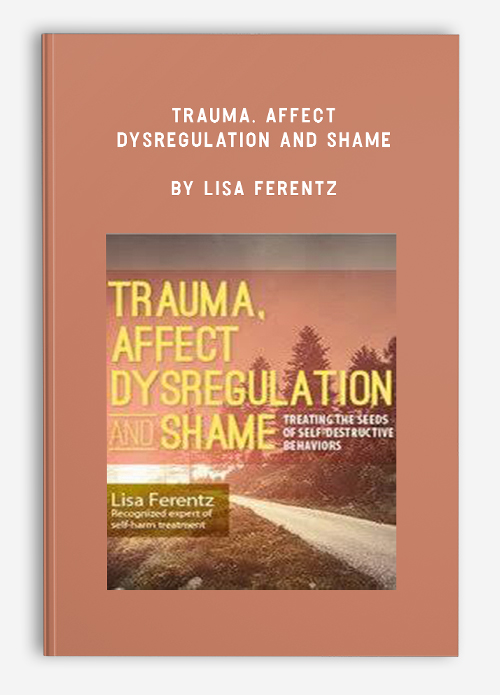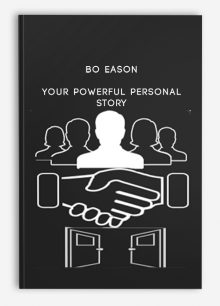Trauma, Affect Dysregulation and Shame by Lisa Ferentz
$219.99 $62.00

Trauma, Affect Dysregulation and Shame by Lisa Ferentz
**More information:
Get Trauma, Affect Dysregulation and Shame by Lisa Ferentz at Salaedu.com
Description
If you believe that most clients who engage in self-destructive behaviors have Borderline Personality Disorder, you may be missing the fact that they have pain and trauma narratives – and you are not approaching treatment in the best way to create healing.
If you think that the choice to cut as opposed to burn – to starve as opposed to binge – is arbitrary, it isn’t. You need to help clients re-frame their behaviors as the inevitable byproducts of affect dysregulation and shame, and help them embrace new ways of addressing them in therapy.
Join international trauma expert and author, Lisa Ferentz, LCSW, for her much praised, experiential seminar and start altering your practice in treating trauma, shame and self-destructive behaviors.
Lisa will give you her proven approach that incorporates psycho-education that teaches your client new coping strategies that help them:
- Reduce their shame and self-blame narratives
- Self-soothe and re-claim their affect regulation skills
- Short-circuit overwhelming thoughts and feelings
Experience one of the top-selling continuing education seminars available on trauma and shame.
The Connection: Attachment and Affect Regulation
- The four attachment styles and their impact on child development
- The challenge of attaching to unavailable or abusive caretakers
- The connection between trauma, attachment, and the self-narrative of shame
- Living in a state of affect dysregulation and the impact of hypo- and hyper-arousal
- Exploring the dynamics of attachment and affect regulation through videos
Working from a Strengths-Based Perspective
- Advantages to de-pathologizing destructive behaviors
- The impact this paradigm has on the therapeutic relationship
Trauma Re-Enactment
- Meta-communication of self-harm
- “Telling” without talking
- Why acts of self-harm are not arbitrary
- Why your clients hurt themselves
Breaking the Cycle of Self-Destructive Behaviors
- What sets the behavior in motion
- Why it escalates
- What reinforces it
Extinguish Self-Destructive Acts: Creative Interventions
- The connection between trauma, attachment, and the self-narrative of shame
- The “management” of self-harming behavior
- Journaling to understand triggers
- Re-framing cognitive distortions
- Using guided imagery for untenable thoughts and feelings
- Safe place imagery and containment
- The power of incorporating breath work
- Using the body for somatic resourcing and grounding
- Short-circuiting flashbacks and dissociation
Why Standard Safety Contracts Don’t Work and What to Do Instead
- Incorporating CARESS – a unique proven approach
- Eliminating the power struggles in treatment
- Processing clients’ artwork
More information about Medical:
Medicine is the science and practice of establishing the diagnosis, prognosis, treatment, and prevention of disease.
Medicine encompasses a variety of health care practices evolved to maintain and restore health by the prevention and treatment of illness.
Contemporary medicine applies biomedical sciences, biomedical research, genetics, and medical technology to diagnose, treat, and prevent injury and disease,
typically through pharmaceuticals or surgery, but also through therapies as diverse as psychotherapy, external splints and traction, medical devices, biologics, and ionizing radiation, amongst others.
Medicine has been around for thousands of years, during most of which it was an art (an area of skill and knowledge) frequently having connections to the religious and
philosophical beliefs of local culture. For example, a medicine man would apply herbs and say prayers for healing, or an ancient philosopher and physician would apply bloodletting according to the theories of humorism.
In recent centuries, since the advent of modern science, most medicine has become a combination of art and science (both basic and applied, under the umbrella of medical science).
While stitching technique for sutures is an art learned through practice, the knowledge of what happens at the cellular and molecular level in the tissues being stitched arises through science.
1 review for Trauma, Affect Dysregulation and Shame by Lisa Ferentz
Add a review Cancel reply
Related products
HEALTH - FITNESS - LIFESTYLE - MEDICAL
HEALTH - FITNESS - LIFESTYLE - MEDICAL
HEALTH - FITNESS - LIFESTYLE - MEDICAL
Fast Confidence [How To Be More Confident │Confidence Building] from Sharon Melnick, Ph.D.
HEALTH - FITNESS - LIFESTYLE - MEDICAL
Complete Certified Professional Coach Online Course from Berry Fowler
HEALTH - FITNESS - LIFESTYLE - MEDICAL
HEALTH - FITNESS - LIFESTYLE - MEDICAL
HEALTH - FITNESS - LIFESTYLE - MEDICAL




![Fast Confidence [How To Be More Confident │Confidence Building] from Sharon Melnick, Ph.D.](https://tradersoffer.forex/wp-content/uploads/2017/05/Sharon-Melnick-Ph.D.-Fast-Confidence-How-To-Be-More-Confident-│Confidence-Building-220x261.png)





Trevis Trevis –
We create this shop with the mission: Bring the courses to 500 millions of people in the world, to help them awake their power and change their